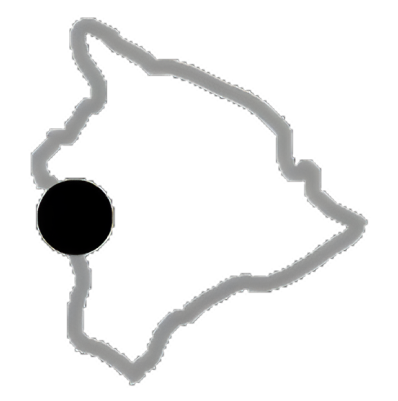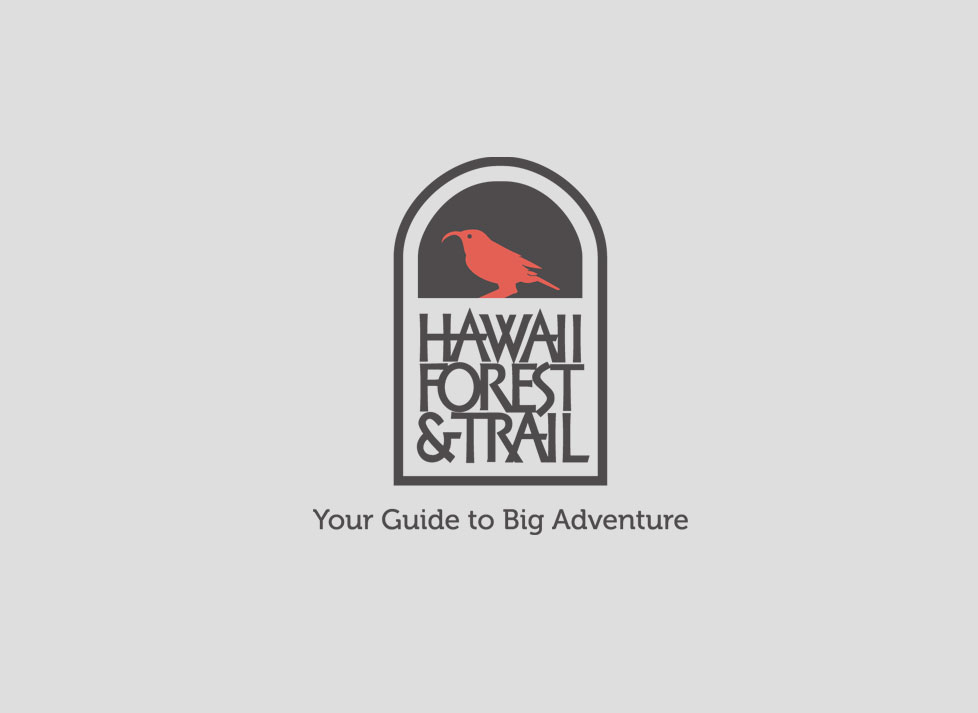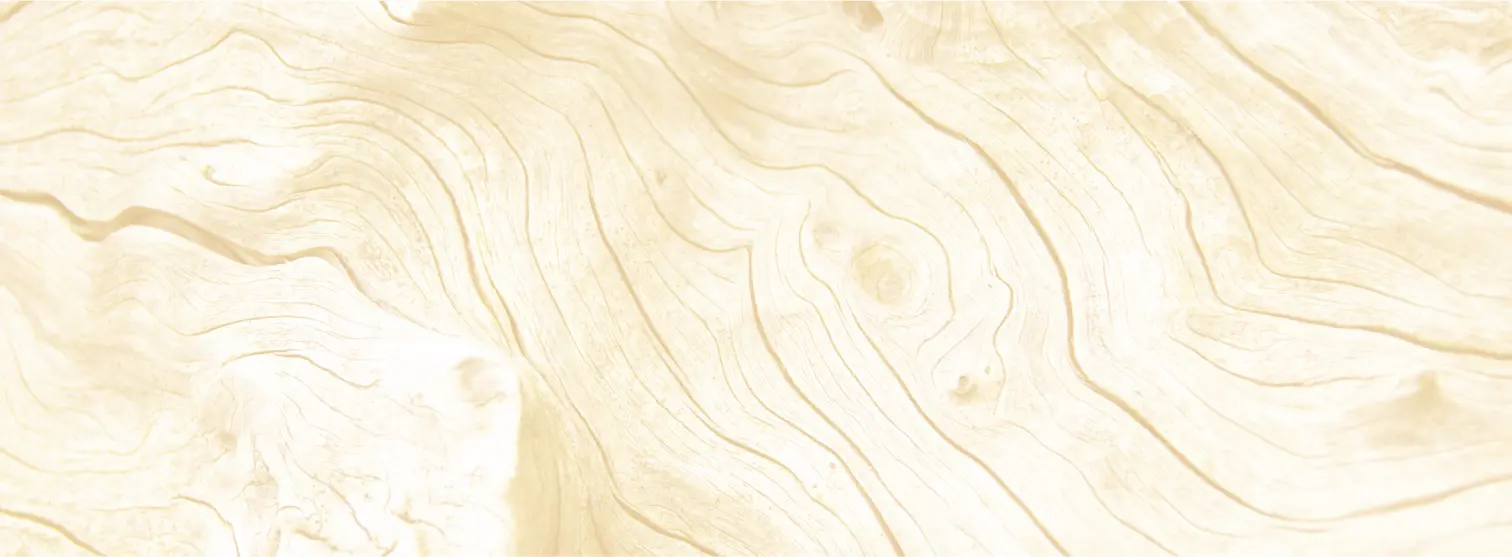bowls, we crept our way over a’a on a narrow, rough, and difficult jeep trail. The surf break was beautiful but the coastline was a beachcomber’s dream. It was strewn with every kind of ocean trash imaginable. Amidst the junk of the sea and the inhospitable barrenness of the lava, a succulent world of botanical treasures awaited us. Never have I seen such an intact and diverse population of native, coastal strand vegetation. It is a Hawaiian botanical oasis in a desert of rock and weeds.
South Point Photo by Andrew Nisbet
Our group had spent two days “botanizing”. Riding shotgun was Clyde, our botanical expert, with the two volume Manual of the Flowering Plants of Hawaii in his lap. In search of the familiar, rare and unknown, “What is it Clyde?” was the oft-repeated question. Usually he knew the answer or, after a short bit in the books, found out. Latin names, Hawaiian names, common family names, confusing descriptive terms of taxonomic keys all abounded. The first day we went across the Saddle Road and into the rainforest. The morning of the second day was spent on the mauka lands of Kahuku Ranch. Our last destination was a remote bay off of South Point Road. I am not a beach person. Given the choice, I’d rather head up into the cool mountain mist than bake at the shore. So I wasn’t expecting anything wonderful. The drive down to the bay didn’t help. It was tortuous, both on the vehicle and the passengers. My attitude and expectations first began to change as we approached brackish ponds and passed through the largest beach naupaka (Scaevola) stand I’ve ever seen. Though a completely wild patch, it looked trimmed, irrigated, and planted. There were a couple hundred acres of solid naupaka, three feet off the ground, punctuated here and there with majestic heliotrope trees. Then Peter Van Dyke of the Ethnobotanical Garden made a statement that really piqued my natural history sensibilities, “You know, I think this place is my favorite spot of Hawaiian habitat.”
Verantwoord Wedden: Essentiële Tips van Winstwijzer
Ben je een liefhebber van sportweddenschappen maar wil je ook verantwoord spelen? Dan ben je bij Winstwijzer aan het juiste adres! In deze post delen we essentiële tips voor verantwoord wedden, zodat je optimaal kunt genieten van het spel zonder onnodige risico’s te nemen. Of je nu een doorgewinterde gokker bent of net begint met wedden, deze tips zullen je helpen om bewust en verantwoord te spelen.
Van het beheren van je budget tot het herkennen van risicovolle patronen, wij bieden praktisch advies om jouw wedervaring te verbeteren. Ontdek hoe je slimme keuzes maakt, je emoties onder controle houdt en plezier hebt met verantwoord wedden. Lees verder en ontdek hoe je jouw weddenschappen naar een hoger niveau kunt tillen met de expertise van Winstwijzer!
Verantwoord Wedden: Wat is het en Waarom is het Belangrijk?
Verantwoord wedden op sportwedstrijden is van groot belang voor elke gokker. Winstwijzer biedt essentiële tips om verantwoord te wedden en plezier te beleven aan het gokken. Een van de belangrijkste tips is om een budget vast te stellen en zich hier strikt aan te houden. Door vooraf te bepalen hoeveel geld men wil besteden, kan men voorkomen dat er meer wordt ingezet dan verantwoord is. Daarnaast is het verstandig om te wedden op sporten en teams waar men daadwerkelijk kennis van heeft, in plaats van lukraak in te zetten op wedstrijden.
Een andere waardevolle tip van Winstwijzer is om emoties buiten het wedden te houden. Emoties kunnen leiden tot irrationele beslissingen en impulsief gedrag, wat kan resulteren in verliezen. Door rationeel en doordacht te blijven bij het wedden, vergroot men de kans op succes en plezier. Tot slot benadrukt Winstwijzer het belang van het regelmatig evalueren van weddenschappen en strategieën, om te leren van zowel winsten als verliezen en de gokervaring te verbeteren.
De Voordelen van Verantwoord Wedden bij Sportweddenschappen
Verantwoord Wedden: Essentiële Tips van Winstwijzer. Bij het plaatsen van weddenschappen is het belangrijk om verantwoord te spelen. Winstwijzer benadrukt het belang van verantwoord wedden om plezier te behouden en problematisch gokgedrag te voorkomen. Door de tips van Winstwijzer te volgen, kun je op een verantwoorde manier genieten van het gokken en mogelijke risico’s minimaliseren.
Een van de belangrijkste tips van Winstwijzer is om je budget goed te beheren. Door vooraf een limiet vast te stellen en je hieraan te houden, voorkom je dat je meer geld uitgeeft dan je je kunt veroorloven. Winstwijzer adviseert spelers om alleen te wedden met geld dat ze kunnen missen. Op de website van Winstwijzer, http://winstwijzer.com/, vind je meer informatie over het effectief beheren van je gokbudget.
Een andere tip van Winstwijzer is om je emoties onder controle te houden tijdens het gokken. Emoties kunnen leiden tot impulsieve beslissingen en roekeloos gedrag. Winstwijzer moedigt spelers aan om rationeel te blijven en niet te handelen vanuit frustratie of euforie. Bezoek http://winstwijzer.com/ voor nuttige richtlijnen over hoe je je emoties kunt beheersen en verstandige weddenschappen kunt plaatsen.
Praktische Tips voor Verantwoord Wedden van Winstwijzer
Als het gaat om verantwoord wedden, is het essentieel om doordachte strategieën te hanteren. Winstwijzer biedt waardevolle tips voor diegenen die op zoek zijn naar een verantwoorde benadering van weddenschappen. Een van de belangrijkste adviezen is om een budget vast te stellen en hier niet van af te wijken. Door je winst en verlies te monitoren, kun je beter inzicht krijgen in je gokgedrag en eventuele problemen vroegtijdig aanpakken.
Een andere belangrijke tip van Winstwijzer is om je goed te verdiepen in de wedstrijden of evenementen waarop je wilt wedden. Kennis is macht, en door grondig onderzoek te doen, kun je beter geïnformeerde beslissingen nemen. Daarnaast benadrukken ze het belang van het beheersen van je emoties tijdens het wedden. Laat je niet leiden door impulsieve acties, maar blijf rationeel en gefocust op je strategie. Met deze essentiële tips helpt Winstwijzer je om op een verantwoorde manier te genieten van het wedden op sport of andere gebeurtenissen.
Risicobeheer en Budgettering bij Weddenschappen: Een Gids
Verantwoord wedden op sport is van groot belang om plezier te behouden en risico’s te minimaliseren. Winstwijzer biedt essentiële tips om verantwoord te wedden en de kans op winst te vergroten. Allereerst is het belangrijk om een budget vast te stellen en hier niet van af te wijken. Door verstandig met je geld om te gaan, voorkom je onnodige verliezen en blijft het gokken leuk en spannend.
Een andere tip van Winstwijzer is om je goed te verdiepen in de sporten en competities waarop je wilt wedden. Door kennis op te doen over de teams, spelers en recente prestaties, kun je betere voorspellingen maken en je winkansen vergroten. Daarnaast is het verstandig om niet impulsief te wedden, maar geduldig te wachten op de juiste kansen en weddenschappen.
Als laatste benadrukt Winstwijzer het belang van het beheersen van emoties tijdens het wedden. Laat je niet leiden door frustratie of euforie, maar blijf rationeel en houd vast aan je strategie. Door deze essentiële tips te volgen, kun je op een verantwoorde manier genieten van het wedden op sport en hopelijk mooie winsten behalen.
De Toekomst van Verantwoord Wedden: Trends en Ontwikkelingen
Verantwoord wedden op sportwedstrijden is van groot belang om plezier te hebben en verstandig met je geld om te gaan. Winstwijzer biedt essentiële tips om op een verantwoorde manier te wedden. Een van de belangrijkste tips is om altijd binnen je budget te blijven en niet meer geld in te zetten dan je kunt missen.
Een andere waardevolle tip van Winstwijzer is om je te verdiepen in de sport waarop je wilt wedden. Kennis van de teams, spelers en recente prestaties kan je helpen om weloverwogen beslissingen te nemen en je winkansen te vergroten. Daarnaast is het verstandig om je niet te laten leiden door emoties, maar rationeel te blijven bij het plaatsen van weddenschappen.
Het is ook aan te raden om gebruik te maken van bonussen en promoties die door bookmakers worden aangeboden. Door deze extra’s slim in te zetten, kun je je winstpotentieel vergroten. Tot slot benadrukt Winstwijzer het belang van het stellen van realistische doelen en het vasthouden aan een strategie bij het wedden op sport.
Kortom, met de essentiële tips van Winstwijzer kun je op een verantwoorde manier genieten van het wedden op sport. Door verstandig om te gaan met je budget, kennis op te bouwen en strategisch te werk te gaan, kun je je winkansen optimaliseren en tegelijkertijd plezier beleven aan het wedden op jouw favoriete sportevenementen.
Om verantwoord te wedden is het cruciaal om een strategie te volgen en de juiste tips toe te passen. Winstwijzer heeft essentiële adviezen samengesteld om jou te helpen succesvol te zijn in de wereld van weddenschappen. Door het beheersen van je bankroll, het begrijpen van kansen en het maken van weloverwogen beslissingen, vergroot je je kansen op winst en verminder je de risico’s van gokken. Blijf geïnformeerd, speel slim en geniet van een verantwoorde en plezierige gokervaring!
Slowly we bumped and lurched along the lava and sand path through the naupaka. Even before we stopped and got out of the vehicle my comrades began to mark off the species excitedly: pohuehue (Ipomea), pauohiiaka (Jacquemontia), hinahina (Heliotropium), nehe (Lipochaeta), naio (Myoporum), ilima (Sida), nohu (Tribulus), akulikuli (Sesuvium.) Once out of the vehicle we made our way to the ponds. At my feet along a seldom used path was a succulent world of Hawaiiana. My first surprise was the Myoporum. I have seen naio in numerous habitats on the island including coastal strand. I realize it has many different forms. But the naio at my feet in the sandy pahoehoe was incredibly unique. Growing as a matting ground cover, only a few inches tall, it gave no hint that it was the same species we had viewed as 30 foot tall trees the day before in the forest. It’s leaves were thick, fleshy and succulent. “Is this a separate species?” I asked Clyde. “I don’t know, but right now they [the taxonomists] have all the Myoporum lumped together. Though this certainly looks different.” I was out of my realm and began to ask the child’s question over and over again, “What’s that?”
Makaloa Photo by Bishop Meseum
Ohelo kai (Lycium)—the Hawaiian tomato whose little fruits are edible though a little salty. Pauohiiaka—the vine that covered up Pele’s little sister Hiiaka when Pele left her on the beach too long. Its soft vines and tiny leaves protected her from the sun. Hinahina—unlike its large tree-like naturalized cousin, is a miniature succulent groundcover. The nohu was especially interesting to me. It is our native Hawaiian puncture vine whose flowers are as delicate and aromatic as its thorns are fat and pokey. Next to the ponds was a substantial stand of the rare makaloa (Cyperus.) This native sedge is used to weave very intricate and comfortable mats. The art of makaloa weaving was all but lost until recently revived by native Hawaiian practitioners like Aunty Elizabeth Lee. According to some cultural experts, this makaloa population is one of the largest known on the island. The upright native sedge was a perfect accent among the rest of the native creepers.
Out of time we had to leave. Everybody else decided to walk rather than ride out on the bumpy road. They had no problem keeping up with the vehicle’s slow pace. Once back in the dustbowls we had fun disappearing then reappearing through the thick red clouds of volcanic dust and ash. Beyond the dust, in the desolate pasture of lantana, apple-of-Sodom, and alien grasses we stopped and observed a herd of buffalo. American Bison on Hawaiian plains a short distance from an isolated, fragile, world of rare and coastal succulents. As we drove back to Kona that coastal strand slowly wove its tiny vines and soft leaves into my consciousness. At home tonight I couldn’t stop thinking about the dense naupaka, the brackish scent of the air, and the natural wonders on the lava and sand. Two days of botanizing with knowledgeable folks in a variety of terrain was really wonderful. I had made new botanical acquaintances, both human and plant. And I understand what Peter meant about his favorite Hawaiian habitat. I think we saved the best for last.


